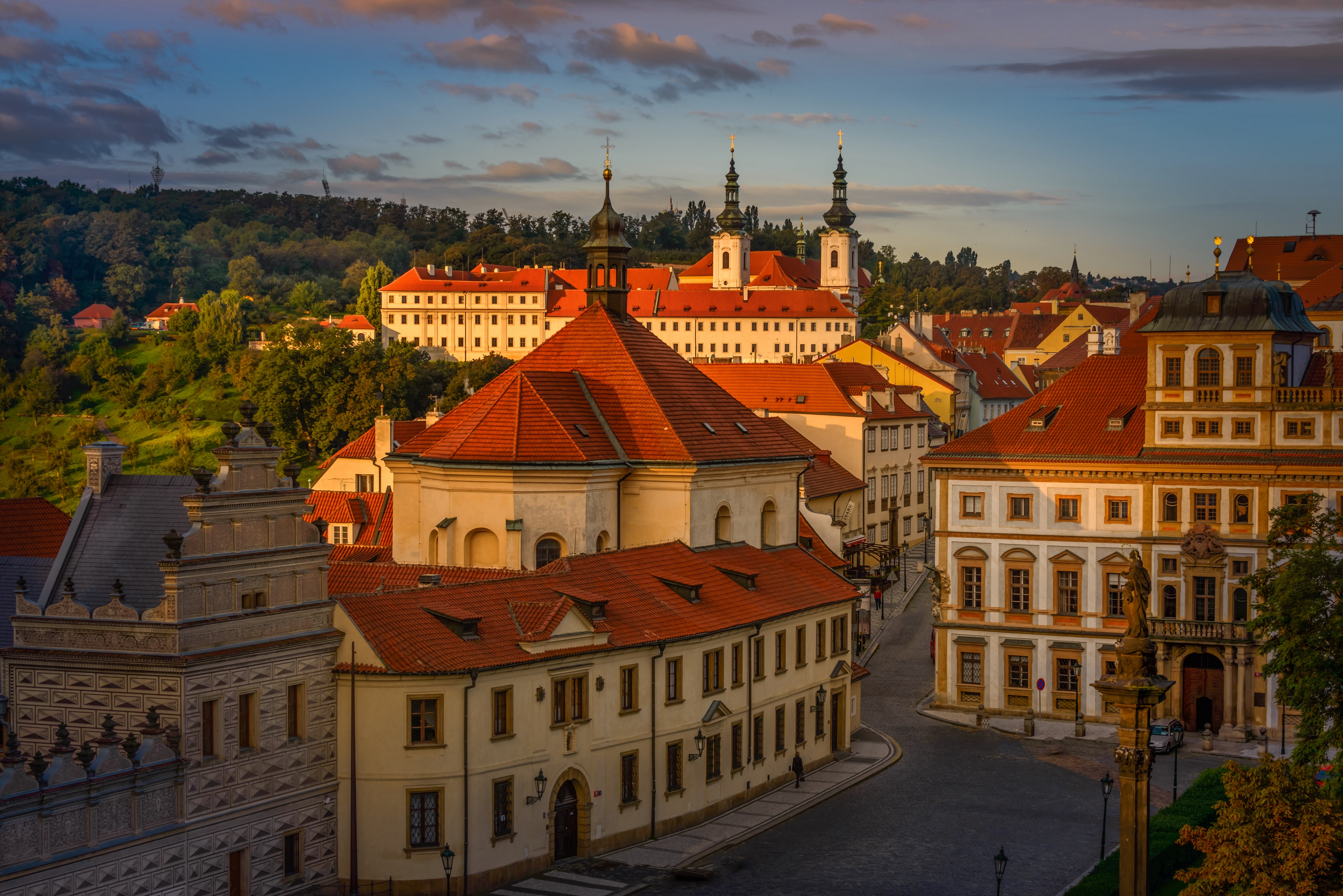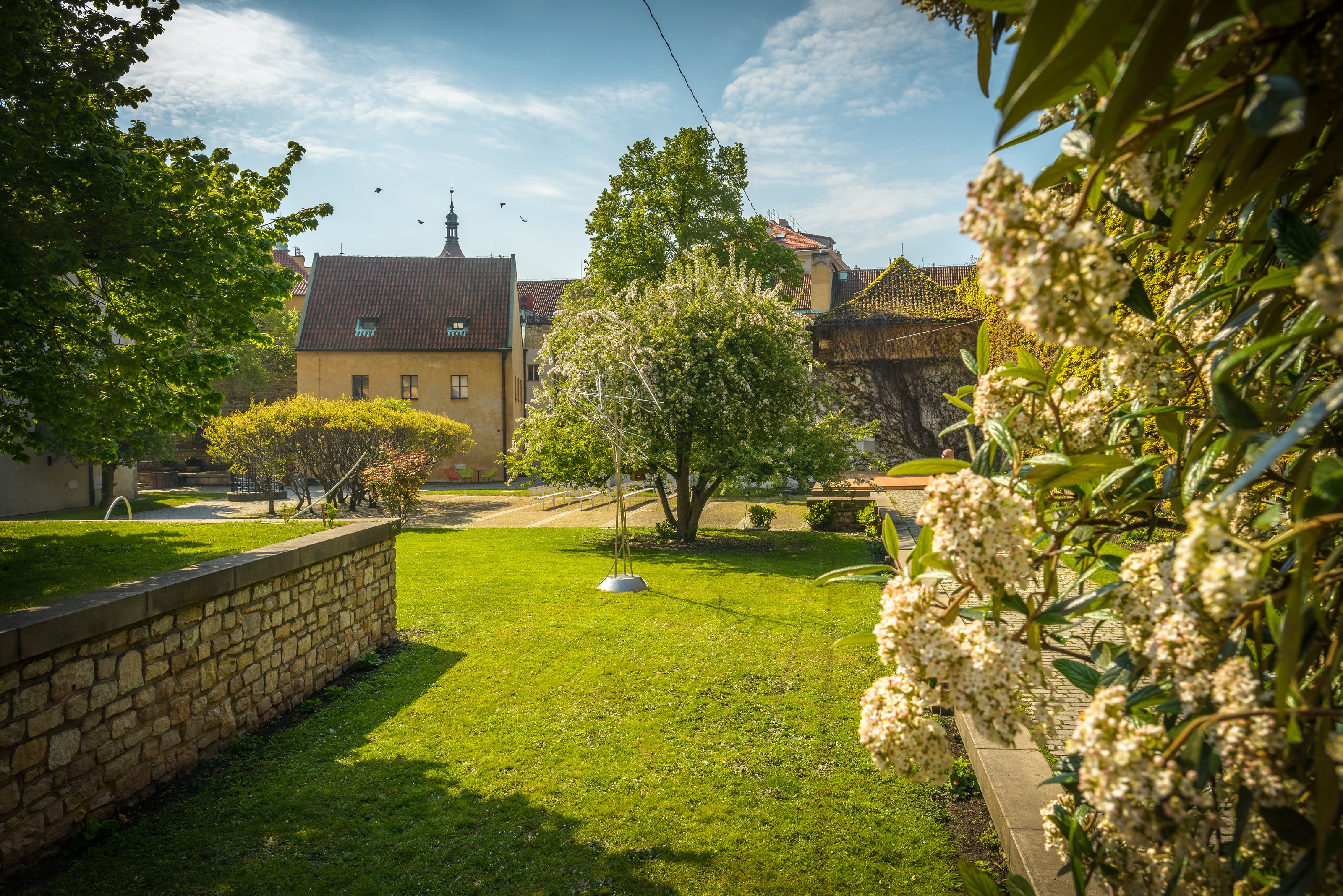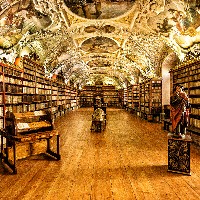Breadcrumbs navigation
The new life of Prague monasteries and ecclesiastical buildings
The number of ecclesiastical monuments in our capital is truly remarkable. You’ll come across one almost literally at every step. However, many of them no longer serve their original purpose. Come with us on a tour of the most interesting erstwhile ecclesiastical buildings and find out what secrets they hide today.
Břevnov Monastery and Strahov Monastery
Let’s start with the two oldest, still functioning monasteries within greater Prague. The older one, the Břevnov Monastery, has been serving the Benedictine Order since the 10th century and is the oldest male monastery in the Czech Lands. Ever since its founding it has included a brewery, which continues to operate here today. These days, however, you can also stay here and eat well in the monastery complex, as it includes the first eco-friendly hotel in Prague – the Adalbert, and its adjacent restaurant the “Klášterní šenk” [The Monastery Tavern]. The beautifully decorated Terezián Hall serves as a concert hall. Its ambience is most particularly suited to Advent and Christmas concerts. The large monastery gardens are a popular venue for a relaxing stroll.
Strahov Monastery may be almost two centuries younger, but it is one of the most significant architectural heritage monuments in the Czech Republic. It is the oldest Premonstratensian Order monastery in Bohemia and, as in the case of the Břevnov Monastery, apart from the premises serving exclusively monastic life you will find buildings quite sought after by the general public. In addition to the indispensable monastery brewery, the main draw is the world-famous Strahov Library with its two beautiful chambers, admired by visitors from all over the world. The Strahov Picture Gallery and the Cabinet of Curiosities are also worth a visit. Also to be found in the monastery grounds is one of the few Renaissance ecclesiastical buildings, the Church of St Roch, built here by Emperor Rudolf II to give thanks for averting the plague epidemic. Since the 1990s, the church has been serving as a modern art gallery.

The Klementinum
Let’s leave Prague’s periphery and head straight to the heart of the city. It is here that the second largest complex of buildings after Prague Castle stands, the Klementinum. Originally a Jesuit college, it has always been an important centre of culture and education, and continues this tradition today. For more than 200 years, the National Library has been based here with its beautifully ornate Baroque library hall housing the most valuable manuscripts and books published in Bohemia since the beginning of the 19th century. The Astronomical Tower, which dates from the beginning of the 18th century, and was the only observatory in the Czech Lands until WWII, is another tourist draw.
The Klementinum Mirror Chapel is mainly a venue for music; with a number of concerts throughout the year. In addition to the above, you can also find here the longest-serving weather-station in Bohemia.
Prague Crossroads
Not far from the Klementinum stands the ancient Church of St Anna known as the Prague Crossroads. Václav Havel, the former Czech president, writer and playwright was the man behind its transformation into an international spiritual centre. Today, this 10th-century church serves as a place for the most diverse meetings, lectures, discussions, concerts, performances, exhibitions, happenings and meditations, responsive to the multicultural diversity of today’s world.
Convent of St Agnes
The 13th-century monastic building once served two Orders – the female Order of the Clarisses (the Order of St Clare) and the male Franciscan Order of the Minorites. The two were connected by a similar philosophy inspired by the ideas of St Francis of Assisi. The medieval monastery complex has its own distinctive genius loci, which inspired the National Gallery in Prague to put its unparalleled exhibition of medieval art here. The St Agnes convent features fully restored and freely accessible gardens, which also serve as an outdoor gallery. It houses a number of works by contemporary artists. In summer, the gardens are the venue for the popular Anežka Live festival.

The Augustinian Monastery and Dominican Monastery in the Lesser Town
Former monasteries can serve not only as cultural and artistic venues, but also for purely commercial purposes. Two examples can be found in the Lesser Town. The former Augustinian and Dominican monasteries have been turned into luxury hotels of well-known brands, sought after not only for their top-tier services, but also for their attractive surroundings rich with history, located in Prague’s most picturesque district.
Museum of Music
One of the most interesting buildings that once served the Church now houses the Czech Museum of Music. The former Baroque church of St Mary Magdalene dazzles visitors most especially with the impressive quadrangle space and surrounding galleries, which is often used as a concert hall. Equally interesting are their collections mapping music history.
The ‘Dressing room’ of the Infant Jesus of Prague
Just a few yards from the museum is the Church of Our Lady of Victory, which has become best known as the home of the most famous Prague icon – the Infant of Prague. This legendary miraculous wax statuette of Infant Jesus is probably the best dressed ‘child’ in Prague. And it is his wardrobe that has its own dedicated museum at the back of this greatly visited sanctuary. You can see historical outfits, but also modern ones, donated by believers from all over the world. Some of them are of quite incalculable value. You will find here, for example, outfits donated to the Infant Jesus by Empress Maria Theresa, or those from exotic destinations, whose decorations reflect their local culture.



